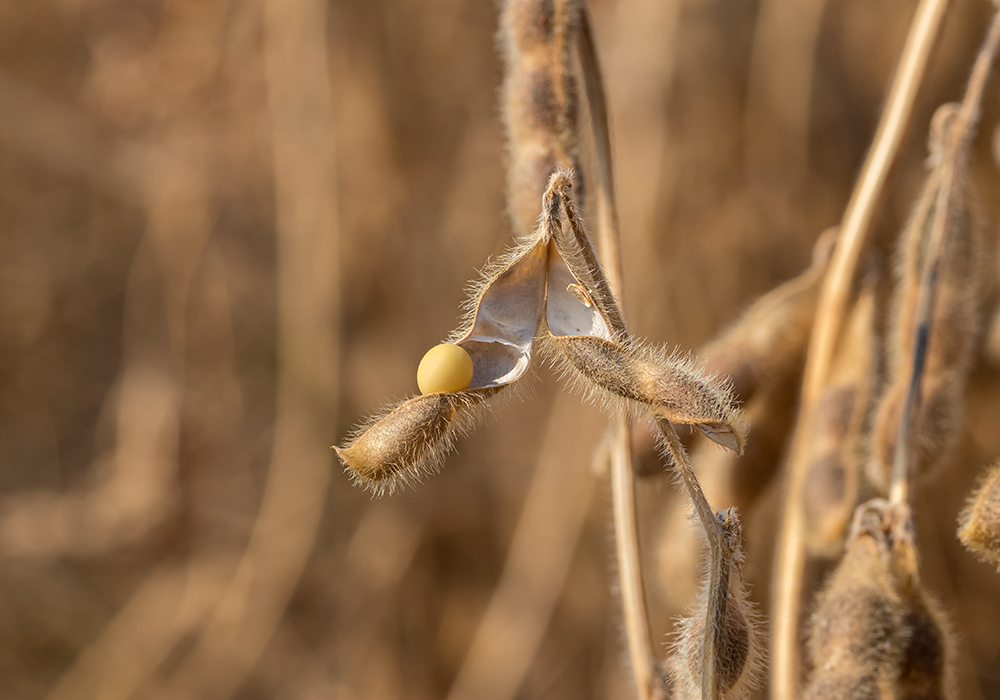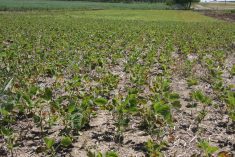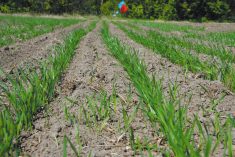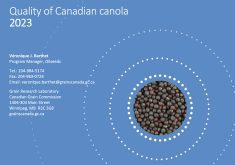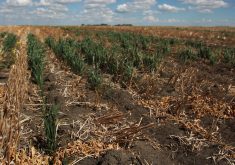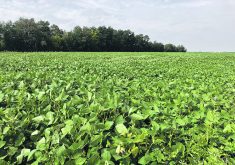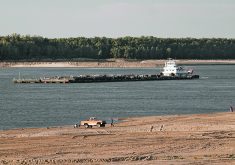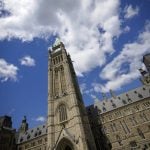Crops that received late-July and early-August rain are doing OK, but most suffered from scorching heat and bone dry soil
Manitoba soybean growers will likely see lower yields this year, but a price of $15 per bushel should compensate for below average yields.
Like all crops, the province’s soybeans suffered in June and July during weeks of 30 to 35 C heat and almost no rainfall.
Rain in the second week of August and a dump of rain around Aug. 20 should improve yields for many soybean growers, but the crop really needed rain in late July for producers to achieve yields of 40 bushels per acre or higher.
“Anything that caught rainfall, those showers in late July or early August, those stands are looking pretty good,” said Dennis Lange, pulse specialist with Manitoba Agriculture.
“Anything with these recent rains, that’s just going to fill seed size…. (but) all the pods have formed…. They’re not going to produce any more pods.”
A number of Manitoba farmers recorded soybean yields in the 40s and 50s last year with the provincial average around 38 bu. per acre. That figure will be significantly lower in 2021.
The scorching heat and dust-like soil in June and July put a damper on yield potential.
Lange, who has a history of accurate predictions, is forecasting an average yield of 25 to 30 bu. per acre in Manitoba. Some producers will achieve 40 or higher, but most will be in the low 30s or 20s.
“When you look at 2019, we had a yield of 28 (bu.). That was a very dry summer and super wet in September.”
Soybeans have more heat tolerance than most crops grown on the Prairies, but the extreme conditions in July were even too severe for beans. In Winnipeg, for instance, there were 16 days in July when temperatures exceeded 30 C and much of eastern Manitoba received less than 10 millimetres of rain that month.
Cassandra Tkachuk, a production specialist with Manitoba Pulse & Soybean Growers, saw soybean plants that halted seed production as they struggled through the harsh conditions.
“I was seeing that some (plants) had produced pods, but the drought effects later on were causing the pods to shut down,” she said.
“I saw full-length pods that had started to produce seeds just (turn) yellow. Probably early August … it (the plant) was basically cutting off pods that it couldn’t handle any more, trying to divert the resources into the newer growth.”
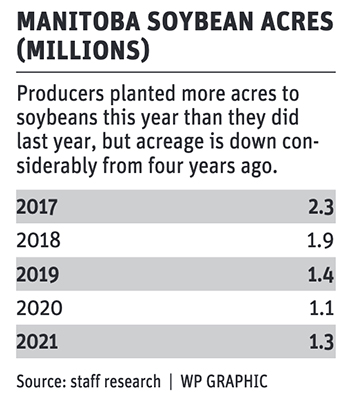
Like Lange, market analysts with Agriculture Canada are also forecasting lower soybean yields for Manitoba.
In its Outlook for Principal Field Crops, released Aug, 20, the department projected western Canadian soybean yields at 20 percent below the five year average.
The five year average for Manitoba would likely be around 35 bu. per acre.
Harvest is probably two to three weeks away for most soybean fields in Manitoba, and anything could happen between now and then, but strong prices will likely persist. November futures in Chicago are trading above US $13 in Chicago and elevator prices in Manitoba remain attractive.
That could attract more acres in 2022.
“All I can say is that $15 per bu. soybean makes more soybeans,” Lange said.
Manitoba soybean acres have declined in the last five years, sinking from 2.3 million in 2017 to 1.1 million in 2020. There are approximately 1.3 million acres this year, and that number could creep higher next year if growers shift from peas to soybeans.
“If we end up with 30 bu. averages (for beans) and peas are probably going to be 38-40 (bu.) … we might see a little decrease in pea acres next year,” Lange said.
“(But) the crop isn’t in the bin yet…. If we look back to 2019, we had a month of wet weather and a lot of the soybeans got harvested in October and November.”
For more content related to drought management visit The Dry Times, where you can find a collection of stories from our family of publications as well as links to external resources to support your decisions through these difficult times.




